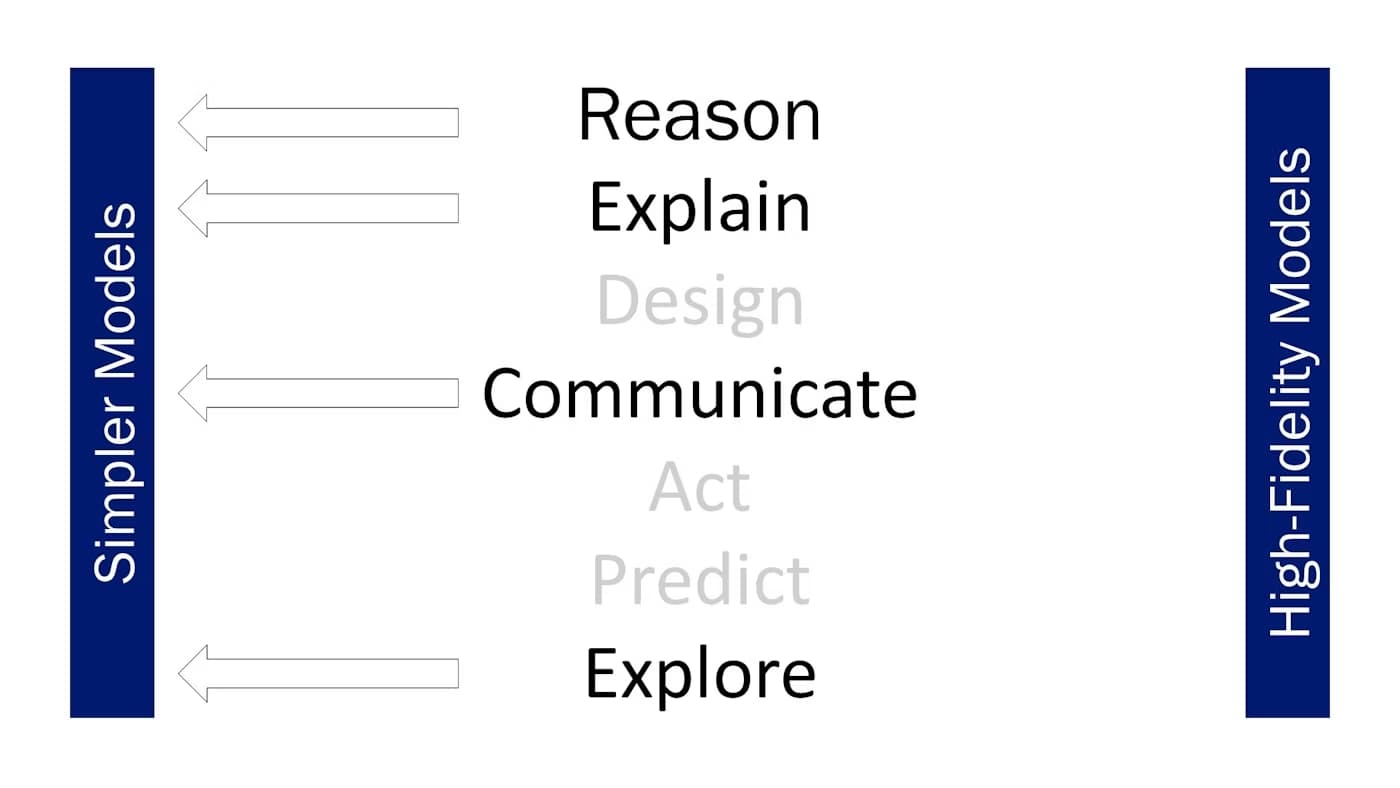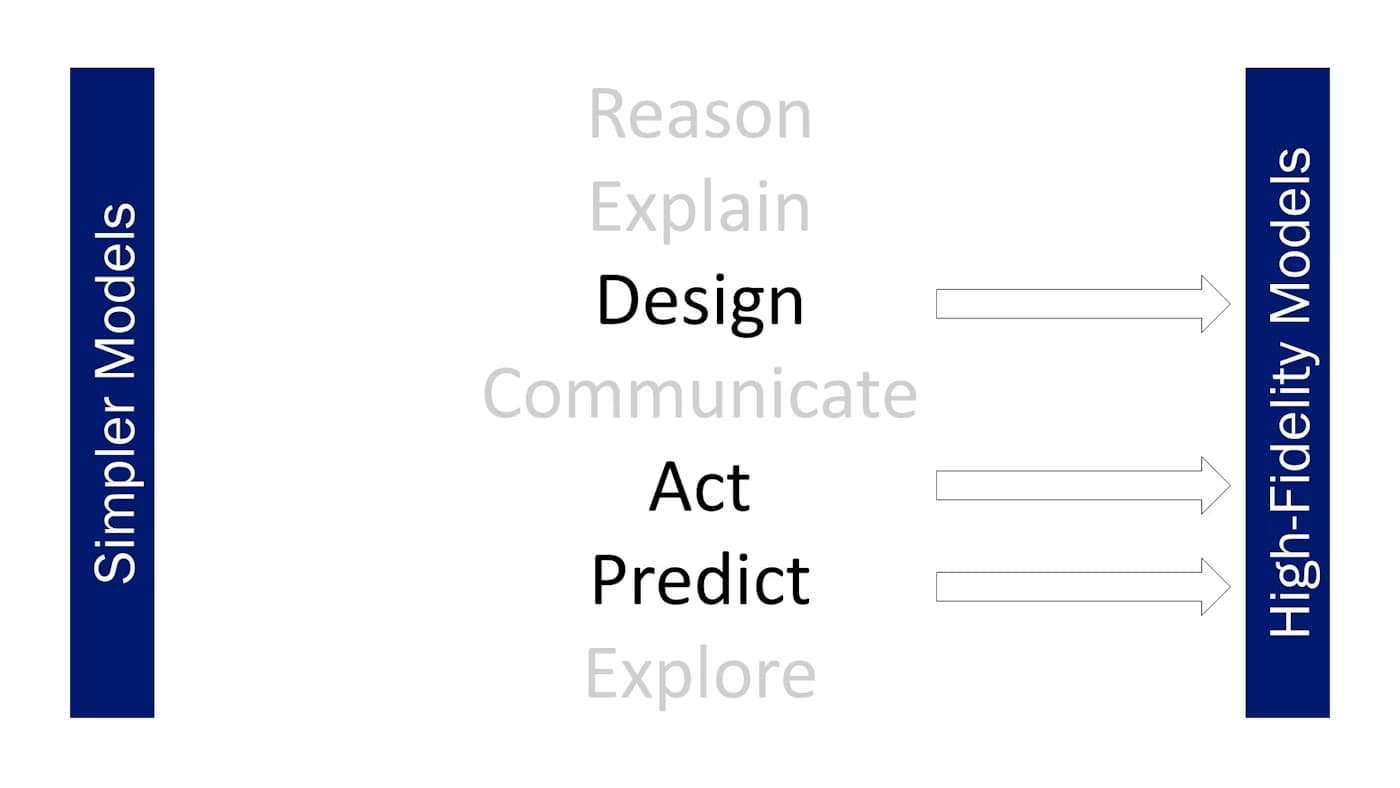Formal business models shape and extend our intuition. They help us communicate our ideas, make better decisions, and take more effective actions. However, the tools must fit the task. That’s why many-model thinking is required.
We can usually rely on our intuition to tell us the direction of effects. For instance, increasing advertising expenditures is likely to cause an increase in sales. Models can supplement our intuition by revealing the shape and form of those effects. How quickly might sales increase? At what point might we expect to see diminishing returns on our advertising investment?
All models are wrong; many are useful.
Models can help us understand complex systems characterized by feedback effects. They can help us reason better and make more robust decisions.
Wisdom Requires Many-Model Thinking
Consider the hierarchy of wisdom (credit: The Model Thinker, Scott E. Page)

The Hierarchy of Wisdom
- Data consists of raw, unstructured experiences and phenomena. Data lacks meaning.
- Information names and partitions data into categories.
- Knowledge means understanding correlative, causal, and logical relationships. Knowledge organizes information and is often encapsulated in the form of models.
- Wisdom is the ability to identify and apply relevant knowledge.
Not every model is appropriate for every task in a complex world. The tool needs to fit the job. It helps to have an expansive toolbox.

That’s why we endeavor to introduce multiple models and frameworks. Each reveals a different aspect of a complex business, and each has its limitations.
More than Prediction
In business, we often focus on using models for prediction. Budgets and cash flow forecasts come to mind. However, models can be used for much more. Scott E. Page, a professor at the University of Michigan, says models can serve seven different functions, which he summarizes as the acronym REDCAPE:
- Reason—Identify conditions and deduce logical implications.
- Explain—Provide testable explanations for empirical phenomena.
- Design—Choose features of institutions, policies, and rules.
- Communicate—Relate knowledge and understandings.
- Act—Do something.
- Predict—Make numerical and categorical predictions of future phenomena.
- Explore—Investigate possibilities and hypotheticals.
Fitting the Model to the Task
Not all models serve all functions equally well. A deep learning algorithm may yield useful predictions without offering much in the way of explanation. Consider, for example, an algorithmic neural network:

An algorithmic neural network
Visual models such as BPMN process maps can help us communicate and explain but must be extended to allow sufficient detail to be executable.

A simple BPMN process map
The point is: models can serve many different useful functions, but no model can perform each equally well.
Fidelity and Tractability
Earlier in my career, I conflated the detail and implied precision of my Excel spreadsheets with quality. I was wrong for several reasons:
- In many cases, I didn’t have enough valid data to justify the level of detail in my models. I imagined a false precision.
- In my attempt to create high-fidelity models, they became intractable. That is, they were unwieldy, which diluted my models’ usefulness for communicating and exploring.
As a rule of thumb, the more valid data we have, the more granular we can make our models. Nevertheless, the competition between our desire for tractable and high-fidelity models reinforces the need for different models for different purposes.
Uses of a Simpler Model
Reasoning, explaining, communicating, and exploring tend to benefit from simpler, more tractable models at the expense of fidelity:

Uses of a High-Fidelity Model
If your data supports it, designing, predicting, and acting benefit from high-fidelity models. However, such models tend to be less tractable and more opaque.

Key Ideas
Even human-scale businesses are complex. That’s why we advocate and pursue many-model thinking.
- Wisdom is the ability to apply relevant knowledge.
- Knowledge is often expressed in the form of a model.
- Prediction is but one of several uses of models.
- Tradeoffs between fidelity and tractability are a function of data availability and purpose.
- Visual representations can enhance communication and the practical utility of your models.

